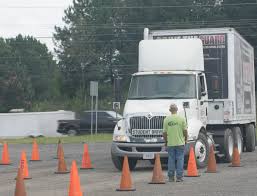The trucking industry serves as the backbone of economies worldwide, facilitating the movement of goods across vast distances. However, the efficiency and well-being of truck drivers are profoundly influenced by the state of infrastructure within the regions they traverse. This article delves into the multifaceted relationship between state infrastructure and truck drivers, examining the impact of road quality, traffic management, regulations, technological advancements, environmental considerations, and the challenges faced by drivers.
2. Importance of State Infrastructure for Truck Drivers
2.1. Road Quality and Maintenance
One of the primary factors influencing truck drivers is the quality of roads and their maintenance. Smooth, well-maintained highways contribute to fuel efficiency, reduce wear and tear on vehicles, and ultimately enhance the overall productivity of the trucking industry.
2.2. Traffic Management
Efficient traffic management is crucial for truck drivers to meet delivery schedules. State infrastructure that includes intelligent traffic systems, well-designed intersections, and effective traffic flow strategies can significantly reduce congestion, minimize delays, and improve the overall transportation experience.
2.3. Rest Areas and Facilities
Long-haul truck drivers often face the challenge of finding suitable rest areas. Adequate rest areas equipped with amenities such as parking spaces, sanitary facilities, and food options contribute to the well-being and safety of truck drivers. State investments in these facilities can positively impact driver satisfaction and reduce fatigue-related incidents.
3. Regulatory Impact on Truck Drivers
3.1. State-Specific Regulations
Each state imposes unique regulations on the trucking industry, affecting everything from weight limits to hours of service. Understanding and complying with these regulations is essential for truck drivers. Discrepancies between state laws can create challenges for drivers operating across multiple jurisdictions.
3.2. Compliance and Enforcement
The enforcement of regulations is as critical as the regulations themselves. State agencies play a key role in ensuring that truck drivers adhere to safety standards, environmental regulations, and other legal requirements. Consistent and fair enforcement contributes to a level playing field and enhances overall safety on the roads.
4. Technological Advancements in State Infrastructure
4.1. Intelligent Transportation Systems
Modern state infrastructure incorporates intelligent transportation systems (ITS) to optimize traffic flow, enhance safety, and provide real-time information to drivers. These technologies include smart traffic lights, dynamic message signs, and traffic surveillance systems. The integration of ITS can streamline logistics operations and improve overall efficiency.
4.2. Toll Collection and Electronic Logging Devices
The adoption of electronic toll collection systems and electronic logging devices (ELDs) has transformed the trucking industry. State-of-the-art infrastructure for seamless toll payments and ELD compliance not only improves operational efficiency but also ensures accurate tracking of driver hours, contributing to safety and regulatory compliance.
5. Environmental Considerations
5.1. Emission Standards
Environmental regulations impact truck drivers through the imposition of emission standards. States that prioritize and enforce stringent emission standards contribute to a cleaner environment but may also pose challenges for trucking companies in terms of fleet upgrades and compliance.
5.2. Alternative Fuels and Charging Infrastructure
As the world moves towards sustainable energy solutions, the availability of alternative fuels and charging infrastructure for electric trucks becomes essential. State initiatives in promoting and investing in such infrastructure can influence the choices and operations of trucking companies, impacting the entire supply chain.
6. Challenges Faced by Truck Drivers
6.1. Congestion and Delays
Inadequate infrastructure, such as poorly designed roads and insufficient traffic management, contributes to congestion and delays. These challenges not only affect delivery schedules but also increase stress on truck drivers, potentially compromising safety.
6.2. Safety Concerns
State infrastructure directly affects the safety of truck drivers. Well-maintained roads, proper signage, and effective traffic management contribute to safer driving conditions. Conversely, poorly maintained infrastructure can lead to accidents and jeopardize the well-being of truck drivers and other road users.
6.3. Accessibility to Services
Truck drivers rely on accessible services such as fuel stations, rest areas, and repair facilities. State infrastructure planning that considers the needs of the trucking industry can enhance the accessibility of these essential services, improving overall operational efficiency.
7. Case Studies
7.1. Impact of Infrastructure in Selected States
Examining the impact of state infrastructure on worst states for truck drivers through case studies provides valuable insights. By analyzing specific states’ approaches to road maintenance, traffic management, and regulatory frameworks, we can identify best practices and areas for improvement.
8. Future Outlook and Recommendations
Considering the evolving landscape of the trucking industry and state infrastructure, it is essential to explore future trends and potential developments. Recommendations for policymakers, industry stakeholders, and truck drivers can help shape a more resilient and driver-friendly environment.
Truck Driver News is your go-to source for staying updated on all things related to the trucking industry in America. We provide daily news on regulatory changes, technological advancements, economic trends, industry best practices, job opportunities, advocacy efforts, professional development, and foster a sense of community among truck drivers. Our mission is to keep you informed and support your vital role in keeping America on the move.
9. Conclusion
In conclusion, the relationship between state infrastructure and truck drivers is intricate and impactful. From the quality of roads to regulatory frameworks and technological advancements, every aspect of infrastructure plays a role in shaping the trucking industry. By understanding these dynamics and addressing challenges, stakeholders can work towards fostering an environment that promotes the safety, efficiency, and well-being of truck drivers, ultimately contributing to the overall success of the logistics and transportation sector.

